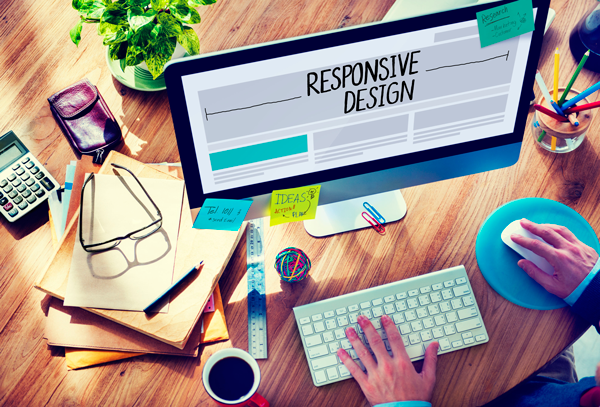Category: City Development
What Do The Five Principles of Urban Economics Mean For Your City?
Posted by Retail Attractions Blog on April 12, 2019 in Blog | No Comments
For decades, scholarly journals have published hundreds of studies on urban economics. People studying cities ask questions like, “Why do some cities grow and others decline?” and “What makes certain cities generate more wealth than others?”
Of course, when you’re living in and managing a city, answering such questions is about more than academic curiosity. Figuring out what makes cities grow or decline and how cities can generate more wealth are vital to the success of your city.
In “Five Principles of Urban Economics,” published by City Journal, professor Mario Polèse proposes five principles about the economic development of cities. These principals sum-up more than 50 years of research into urban economies into several key points. In this article, we’re going to look at how these points can help turn all this urban economics research into practical advice for your city, including cities with populations of less than 50,000 people.

1) Size And Location Are Key To Determining Wealth
It’s not much of a surprise that a city’s size and location help determine its wealth. What’s more surprising is that city rankings relative to each other stay remarkably stable. In the United States, for example, New York, Chicago, and Philadelphia have stayed the three largest cities east of the Mississippi for well over 100 years. They’ve also remained in the same order.
A city’s relative size and its location are key to determining how much growth it can experience. They also play a big role in determining the city’s economic potential. It’s unlikely that a city which is relatively small and in an out-of-the-way location now will become the “next New York City” or the “next Chicago” any time soon.
This doesn’t mean that smaller communities are doomed to never grow or thrive. In fact, communities with populations fewer than 50,000 residents constitute almost 90% of our country’s general-purpose local governments and many are doing quite well for themselves. Make sure you don’t under-sell your community’s potential just because it’s not one of the largest cities in the area.
2) Dramatic Growth Is Usually Caused By Outside Events
Location and city size aren’t everything. Sometimes cities grow and develop at a rapid pace that has very little to do with their original size or location. According to the research, this type of growth is almost always caused by outside events. Similarly, major changes can undermine a once prosperous city’s economic advantage quickly.
Changes in transportation technology can open up markets for a city, or shut them down if new traffic flow bypasses the city. The development of air-conditioning opened up greater growth for cities in hot climates like Phoenix and Houston. Changing demands for manufactured products can also have a huge effect on cities.
It usually takes a significant outside event – such as the development of new technology or a political shift – to trigger dramatic growth in a city, regardless of its starting size. It’s not usually something those within the city can control. Cities can, however, make choices that trigger growth on a smaller scale.
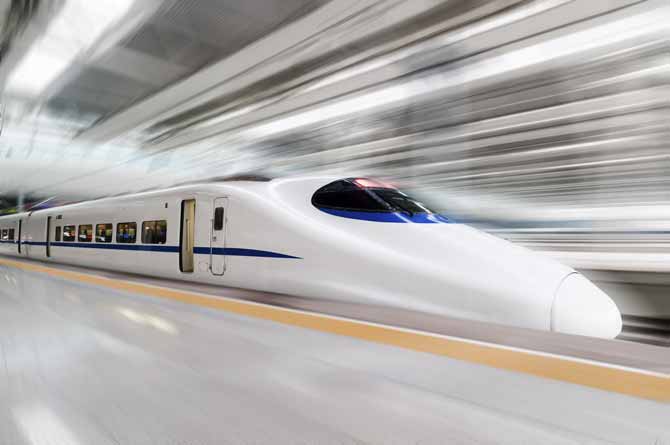
3) Accessible, Well-Connected Cities Grow Faster
Transportation technologies have a profound influence on which cities grow and which ones do not. Cities that manage to make themselves a hub for travel and commerce have a decided advantage over neighboring cities. Some cities benefit from having a major highway, high-speed railway, and/or airport. Others profit based on having a central location or close proximity to major market centers.
The first two principles on this list aren’t something most cities can apply proactively. They’re more something to understand about how urban economics work. For this point, though, the key principle to take away is that city administrators must be on the lookout for opportunities that new transport links can provide. You’ll also want to be aware that lost accessibility can seriously impact city growth.
While you can’t reliably control whether or not a major highway goes through your city, you can make sure that your city is accessible. A 2017 report by the National League Of Cities (NLC) found that economic development and infrastructure are tied as the top most important issues for cities of less than 50,000 people. Market access and connectivity play a crucial role in expanding a city’s economic potential. And that means that it’s time to make long-deferred investments in roads, bridges and related infrastructure a top priority.
4) Every Industry Leaves Its Impression On A City
Once upon a time, quite a large number of cities grew quickly because they specialized in one industry. In many cases, the first cities to industrialize made rapid progress. But when the economy started to shift toward being more knowledge- and service-based, industrial cities had a difficult time transitioning.
When a single industry dominates a city it can result in a wide variety of problems down the road. We’re seeing that in the United States today as many cities with large plants and big factories struggle to find their place in today’s economic environment.
There’s no easy way to fix this problem or to manage the transition. However, broadly speaking, it’s important to accept that some industries will eventually close and that cities will need to diversify into different industries. For small cities of less than 50,000 people, one of the more effective strategies is to invest in raising the quality of life in your city to make it more attractive to new businesses and residents. Bringing in a diverse range of small firms might not provide as many new jobs as attracting one larger company. However, it can be to your advantage in the long run.
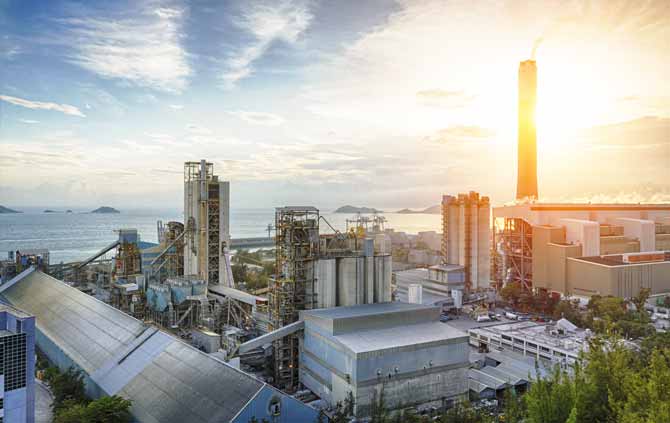
5) Good And Bad Policies Do Matter
Even though scholars have poured decades of research into understanding urban economics, Polèse admits that “econometric models rarely succeed in explaining more than half of cities’ variations in growth over time.” While it might be frustrating to know that there’s no model which can predict your city’s success with 100% accuracy, this can actually be a good thing.
There’s no way for these principles of urban economics to take into account how much of an impact local individuals, businesses, and politics can have on a city. A dynamic mayor, a forward-thinking entrepreneur, or savvy city planners can have an enormous impact on your city’s growth potential. With the right combination of people and opportunities, just about anything is possible.
On the other hand, it’s also easy for bad policies and change-resistant individuals to hold a city back from developing its economic potential. Poor government can undermine even the best advantages in location, technology, industry, and other key areas. Whatever the size of your city, good and bad policies in local government play a vital role in success.
In Conclusion
Navigating the world of urban economics is an enormous challenge for any city. And it can seem especially challenging for smaller communities. One way to take your city to the next level is by consulting with an economic development expert.
Here at Retail Attractions, we specialize in helping both small market communities and large cities grow to their full potential. Economic and retail development are key to growing any city, and we have extensive experience guiding cities through this process. We also offer consulting services related to municipal infrastructure, demographic data and market analysis, strategic planning, and much more. Contact us today to find out how we can help your city.
If you liked this article, be sure to pick up a copy of my new book The Devil’s In the Details: Things that Challenge City Government and the Language of Development. It addresses issues that undermine foundational economic development efforts for cities. It also provides guidelines for how to overcome those issues. Click here to order.
Here’s Why It’s So Important To Keep Municipal Infrastructure Up To Date, and What You Can Do To Make That Happen
Posted by Retail Attractions Blog on February 26, 2019 in Blog | No Comments
Municipal infrastructure is the sort of thing most people take for granted until it stops working. Unless someone’s job involves working on this infrastructure, they only think about their town’s sewage system when the toilet won’t flush, or wonder about stormwater management when their basement floods.
If you’re involved in local government, though, can’t afford to forget about municipal infrastructure until it breaks down. It’s important that you keep this infrastructure up-to-date for both residents and local businesses.
That’s easier said than done, though. Funding shortages and other logistical concerns can keep cities from keeping their municipal infrastructure up to date. Wouldn’t it be nice if you could get some help coming up with a workable solution?
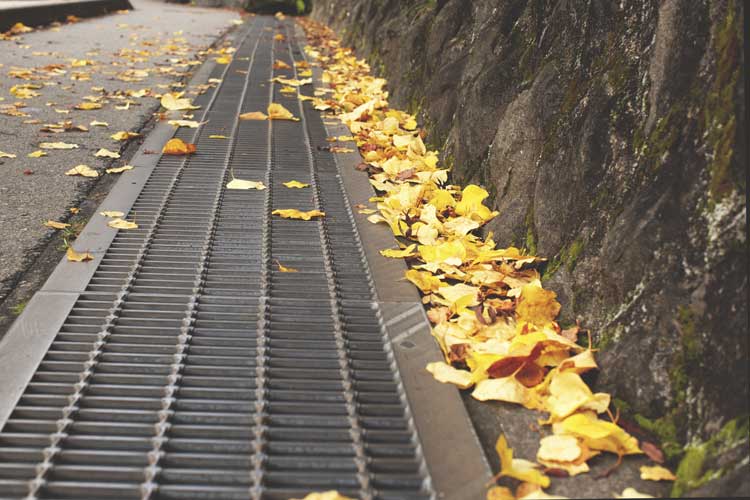
People Are Counting On You
Residents in your community depend on you to provide reliable and affordable municipal services. Not only that, but businesses count on these services as well and you’ll have a hard time attracting new businesses if the municipal infrastructure can’t support retail expansion.
Streets, bridges, sewers, water pipes, treatment plants, transit systems, electricity grid, high-speed broadband, and cellular service are all vital to today’s cities. If you want a thriving community for the people and businesses who are counting on you, then you’ll need to invest in your infrastructure.
Challenges To Infrastructure Improvements
Your community isn’t the only one struggling to find ways to keep municipal infrastructure up to date. Cities across the United States need significant infrastructure improvements. In most cases, local governments don’t have the resources or the finances to pay for all the needed improvements. Getting state, federal, and private-sector funding is also a huge challenge.
Another challenge that faces communities is the need to increase understanding of how serious infrastructure problems really are. Cities also need to develop new, sustainable, and innovative methods of financing the infrastructure that residents need. In addition, you’ll want to develop a plan for updating and maintaining infrastructure in a way that makes sense logistically as well as financially.
How We Can Help
Retail Attractions provides general municipal consulting services for growing communities. We help clients with the development of:
- Local or regional comprehensive plans
- Water, stormwater and sewer master plans
- Transportation/traffic flow master plans
- Technology master plans
- Zoning master plans
- Parking, lighting, sign, and landscaping ordinances
We can also advise and assist city governments with annexation efforts. In addition, once a community has a plan for a healthy infrastructure, Retail Attractions can help entice retail development to your community. Just contact us today to get started.
If you liked this article, be sure to pick up a copy of my new book The Devil’s In the Details: Things that Challenge City Government and the Language of Development. It addresses issues that undermine foundational economic development efforts for cities. It also provides guidelines for how to overcome those issues. Click here to learn more and order a copy.
Want To Make Your City “Smart” Here’s What You Need To Know About How The Internet of Things Relates To Cities
Posted by Retail Attractions Blog on February 26, 2019 in Blog | No Comments
You’ve heard of smartphones, but what about smart cities?
As we move into an increasingly digital future, we’re connecting more and more things to the internet. Want street lights to switch on-and-off at a certain time relative to sunset? Connect it to the internet. People having trouble knowing where to park? Connect parking meters to the internet and drivers can check which are available from their phone.
Connecting things like street lamps, parking meters, coffee makers, thermostats, security cameras, and many other devices creates what we call the Internet Of Things (IoT). In the future, anything that can be connected will be connected. And that includes cities just like yours.
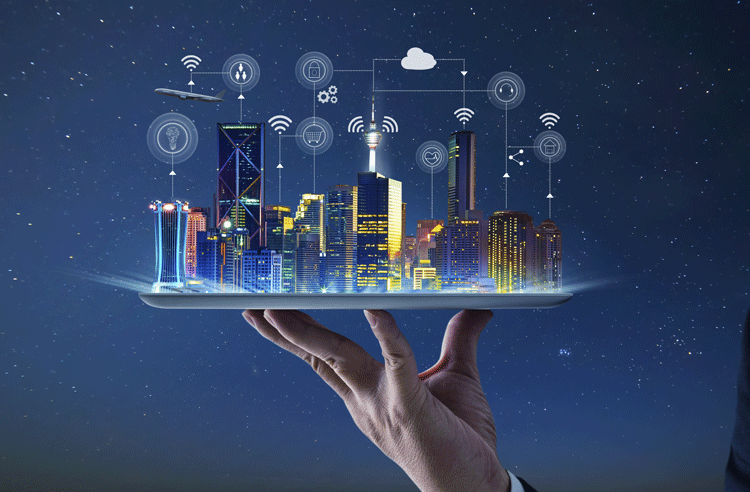
Here’s What A “Smart City” Looks Like
Using the Internet of Things to create smart cities is still a relatively new concept. Many cities are already using it, though. And it’s a good bet that the trend of using IoT to improve the lives of people within cities will continue rapidly. Here are some of the many ways connecting city systems to the Internet of Things can look like:
– Roadway sensors monitor conditions related to traffic congestion, weather, accidents, etc. Sensors can send messages to signs in the town and/or smartphone apps.
– Smart parking meters show available spots on apps, which cuts down drive time for those working and shopping in your city.
– Smart thermostats regulate heating and cooling to optimize energy usage in commercial buildings.
– Water monitors streamline water quality assessments, detect leaks, and make it easier to manage water use.
– Smart lampposts only brighten during specific lighting conditions or when pedestrians or vehicles approach.
– A smart electricity grid analyzes energy use and adapts in order to deliver the optimal supply needed for each household.
– Air pollution sensors and weather prediction monitors make it easier to monitor sustainability efforts.
– Waste sensors in garbage bins monitor garbage levels and optimize routes for waste collection.
– Smart emergency cameras help dispatcher determine severity of emergencies and find optimal routes to the locations.
Pros and Cons To Using The Internet Of Things
IoT allows for nearly endless connections to take place, and we don’t fully understand yet what the impact of those connections will be. It’s an exciting prospect to think of city systems working together to make things better for the people who live in the cities. But there are also some challenges and concerns.
Security is the biggest issue facing the Internet of Things. The more devices that are connected to the internet, the greater the potential that someone could hack into the system. There’s also the related issue of privacy and data security to consider. The issues don’t have easy answers, but they are something to keep in mind and continue discussing as you start to use IoT in your city.
Don’t Get Left Behind
The analyst firm Gartner estimates that by 2020 there will be over 26 billion connected devices making up the Internet of Things. That sounds like a lot, but other sources say that estimate is actually too low. Some even put the number at over 100 billion.
With so much of the world incorporating technology, you don’t want your city to miss-out. Here are Retail Attractions, we can help you navigate issues related to economic and retail development as your city becomes increasingly influenced by the IoT and other technology. Contact us today to learn how we can help your city.
If you found this article useful, then you’ll probably also like my books City On A Hill and The Devil’s In The Details. Click on the titles below to learn more.
– City On A Hill: A Book About Cities and How to Make Them Better
– The Devil’s In the Details: Things that Challenge City Government and the Language of Development.
Here’s Why You Should Work On Your Municipal Infrastructure Before Starting Retail Development
Posted by Retail Attractions Blog on July 9, 2018 in Blog | No Comments
Retailers do extensive research and analysis to make sure they’ve found a good location before deciding to build in a town or city. You can help your community stand-out in these searches by meeting their requirements for retail development sites. One of the best ways to do this is by focusing on developing your municipal infrastructure.
Having the right municipal infrastructure in place is a huge advantage when marketing your community. Retailers will be much more eager to work with a community that’s proactive. If they see you have an actionable plan to upgrade infrastructure and handle the increased demands of retail development, they’ll see you’re serious about working with them.

Plan Your City Systems
If you’re ready with plans for improved traffic flow and public transportation, that might just be the thing that catches a retail developer’s eye. Retailers want to see that your city is prepared to make new retail developments easily accessible. They’ll also be looking at available properties to make sure they’re the right size and in a good location to attract traffic from local and out-of-town customers.
Retailers also want to know that the city infrastructure can handle an increased demand on water, sewage, electrical, communication, and other systems. They won’t want to deal with construction delays or other problems that might come up if your city isn’t ready to expand.
Reexamine City Ordinances
It’s also a good idea to take a look at city ordinances and zoning that will affect retailers. These include rules governing parking, landscaping, signage, and lighting. Making things easy for incoming retailers can go a long way toward convincing them to build in your town.
Another thing to reexamine is your review and approval process. Retailers are not going to want to mess with a lengthy approvals process for permits. The more simple and easy to understand your approval process is, the more attractive working with your community will be.
Get Some Help
Retail Attractions provides general municipal consulting services to growing communities. We offer services that will help you develop:
- Local or regional comprehensive plans
- Water, stormwater and sewer master plans
- Transportation/traffic flow master plans
- Technology master plans
- Zoning master plans
- Parking, lighting, sign, and landscaping ordinances
Once your community has a plan for developing a healthy infrastructure, Retail Attractions can help you come up with a plan that will entice retail development to your community. If you want to learn more, just get in touch with us through this link.
If you found this article useful, then you’ll probably also like my book City on a Hill. It gives a no-nonsense take on economic development that’s really helpful for cities just getting started with their retail development plans.
A Small Town’s Guide To Attracting And Retaining Millennials
Posted by Retail Attractions Blog on April 18, 2018 in Blog | No Comments
The exodus of young people from rural to urban areas can take quite a toll on the population of a small town, or even one of the smaller cities. But even though Millennials (a group that includes anyone born between 1981 and 1996) tend to migrate into urban population centers, it’s vital that small towns find ways to attract and keep young people in the community.
In October of 2019, a Politico survey of American mayors found that 85% list attracting Millennials as one of their top 10 priorities. Millennials are a vital part of the workforce. They’re future homeowners in your community. There’s a good chance they’ll start up small businesses. And they’re one of the key demographics to look at when planning for retail development. But how do you get them to want to live in your town?

Engage With and Consult Millennials
Millennials are going to be one of your best resources when figuring out how to market your community to them. Start out by talking with the Millennials who already live in your community. Invite them into your governmental process. Interview them in-person. Send out invitations to take short online surveys.
Don’t rely on TV or newspapers to reach Millennials. When you’re asking them to weigh-in on your community, you’ll need to reach out in a way that they’ll notice. Setting up a social media presence for your community is a good start. But by far the most effective way to spread your interest in working with Millennials is by word-of-mouth. Once you start talking with a few Millennials, they’ll share their experiences with their friends.
Invest In Millennial’s Priorities
There are some specific things that the average Millennial is going to look for in a community. Whether or not your community fits into their preferred lifestyle will play a huge role in determining their interest. In general, Millennials are looking for
– High-Speed Internet: Millennials are a generation that relies heavily on the Internet for shopping, socializing, recreation, and work. If they can’t get high-speed internet in your area, they won’t be interested.
– Affordable Housing: Affordable housing is another key concern for Millennials, and it’s one of the biggest assets a smaller town can offer. It’s typically much more affordable to live in a rural or suburban areas than a major city.
– Hang-Out Spots: Millennials like the option to spend time in locations that are not their home or work. Coffee shops, micro-breweries, and similar locations are a big draw for Millennials.
– Entrepreneurship Opportunities: A high percentage of Millennials either already own a small business or plan to start a business in the near future. If your community is supportive of small businesses, entrepreneurial Millennials are more likely to move in.
Connect With Institutions and Employers
City government isn’t the only institution that’s interested in attracting Millennials. Educational institutions and local employers also have a vested interest in bringing in young people. Since their goals align with yours, they can be some of your best allies. Schools can help bring in new Millennials and encourage them to stay local by sharing opportunities in the community. And employers can work on positioning themselves to attract and retain Millennial talent.
A strong Millennial demographic is going to support the community and business institutions that already exist in your city. And it can also help your small market community attract new retail development. Young people are the future of any community, so make your town a location where they’d like to put down roots.
How To Develop Retail and Tourism Together For Increased City Revenue
Posted by Retail Attractions Blog on February 21, 2018 in Blog | No Comments
Retail development and tourism development are often planned independently of one another. But if your community has the potential to bring in tourists that’s definitely something to consider when planning retail development. And if your community’s retail offerings can appeal to non-residents, then developing a plan to bring in tourists is key to increasing city revenue.
Considering retail and tourism together is simply good business. Ideally, your community’s retail and tourist offerings should work together to support the local economy. Here are a few tips to make sure you’re doing just that.
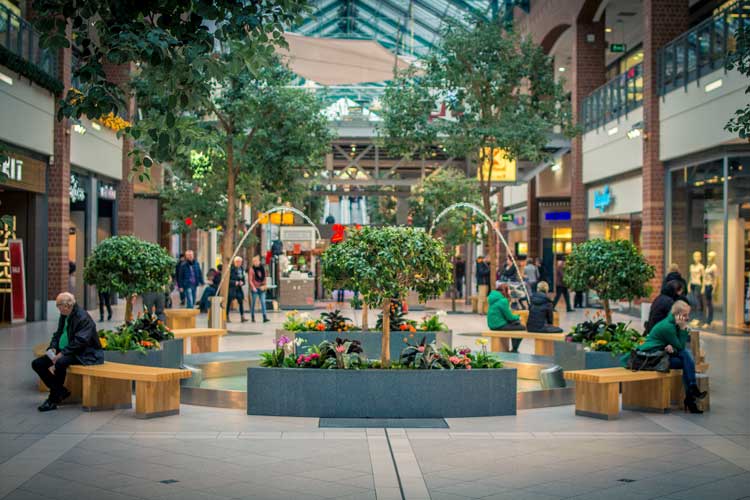
Understand Tourism In Your Community
What attracts visitors to your area? That’s the first question to answer when considering the link between retail and tourism. Retail on its own can draw in a certain number of visitors, but tourist attractions are also going to be important.
When answering the question of why visitors should love your town, think about what makes your community unique or extraordinary. What do you have that other communities don’t or that is better than others can offer? Natural attractions such as lakes and rivers should go on your list, as well as outdoor activities. And don’t forget to include attractions with historic or cultural significance, including local festivals. Tourist attractions like zoos, theme parks, etc. should go on the list as well, along with unique local businesses and artisans.
Compare Tourist and Resident Shopping Patterns
It’s important to know what types of visitors are currently being attracted to your community and what your tourism potential is. But it’s also important to understand your resident’s needs and their retail habits. As you’re planning for tourism, you have to be careful to meet residents’ retail needs as well.
In some cases, there will be quite a bit of overlap between residents’ and tourists’ shopping patterns. This means that the difference between residents and tourists won’t have much of an impact on your retail development strategy. But in situations where there’s a wide gap between the two demographics’ needs and interests, you’ll want to attract retail that can cater to both groups of people.
Appeal To Your Tourism Niche
Once you understand what your community has to offer and what the tourists you’re attracting want, then you can focus on developing your joint tourism/retail development plan. This is where you’ll answer the question, “What products and services complement local attractions and appeal to your tourists?” Answering this question will help you discover your niche in the tourism industry and set you apart from the competition.
It’s easy for a community to feel overwhelmed planning retail development on its own, and even more so when you take tourism into account. Hiring a professional retail consultant will make things much easier. Retail Attractions can help with analyzing tourist and resident demographics, developing an actionable plan, and attracting the retailers you want. Just contact us today to get started.
Three Essential Building Blocks for Creating The Website Your City Needs
Posted by Retail Attractions Blog on August 29, 2016 in Blog | No Comments
Most cities have a website. It’s a necessity in our highly technological world, where the Internet is usually the first place people go when they’re looking for information about a specific location. But does your city have a good website?
When you’re trying to attract retail development to your city, the first thing they’ll do is look you up online. If they find an out-dated website that’s hard to navigate, they’ll likely take their business somewhere else. A poorly designed website tells potential investors that your city doesn’t know how to market itself. In contrast, a solid website design lets investors know you’re serious about investing in the city and staying in touch with the visitors and community members who will form their client base.
Professional
Overall, layout is the first thing people notice when they visit a website. Is the homepage eye-catching and uncluttered? Is the menu simple and navigable? Does the search bar work? Is your community website mobile-friendly? If you can’t answer “yes” to these questions, then it’s time for a redesign.
Modern city websites utilize web design principles to create a responsive site that works well and looks good on mobile devices as well as PCs. When you have a good website, it gives your community instant credibility and helps you stand out from the competition. It’s one of the fastest ways to demonstrate the business value of your community.
Easy Navigation
The second thing users notice about a website is whether or not it’s easy to use. No matter how nice the homepage looks, the website is useless if users can’t find what they’re looking for. You want a website with clear, consistent headers and navigation menus to guide users in the right direction.
When potential retail investors are looking at your website, they want to know people who visit your site can easily find places to shop or dine out. This information is usually included in a “visitors” link in the menu. The “visitors” link often directs to another website with information for tourists on where to shop, eat, and stay while they’re in town. This website should also be helpful and easily navigated.
Up-To-Date
Catching a visitor’s attention and being easy to navigate aren’t the only roles of a website. It also has to present relevant, up-to-date information. No one’s going to be impressed with the website if they search for upcoming city events and find a news article that’s 2 years old. Make sure all the information about your city is as current as possible.
Convinced you need a website redesign? Contact Retail Attractions for help. We know exactly what your website needs to attract new investors. We are partnered with a full-service website development firm to provide web consulting, design, development, hosting and maintenance services specifically tailored to your community’s needs.
Aerial Photography and City Planning
Posted by Retail Attractions Blog on July 12, 2016 in Blog | No Comments
We’re all familiar with the concept of aerial photography. These photos are taken from high up in the air to provide a big-picture view of the land below. If the photography is done correctly, the resulting images can be a useful asset for city planning and retail development projects. Aerial photography works for surveying sites, legal documentation, and marketing, among other things. It’s just one more tool Retail Attractions uses to make your city planning project a success.

Types of Aerial Photography
Aerial photographs can be vertical or oblique. The vertical photographs are taken with the camera pointed straight down. It’s also called a 90-degree or birds-eye view. This type of photo provides a map-like image without distortion.
Oblique photographs are taken at an angle. A 45-degree angle is popular, but they can be taken at many different angles and heights depending on how you plan to use the photograph. This type of aerial photograph shows perspective and provides a view that lets you look at the relative sizes of buildings, trees, and other objects in the area.
Using Aerial Photographs
The different types of aerial photographs have different applications. With vertical shots, multiple photographs of a specific site can be taken at the same height from the ground and combined with GIS (Geographic Information System) to use with surveying, engineering, site planning, and aerial mapping. These photographs can also be used to help resolve legal issues such as land disputes and accident analysis.
Oblique photographs have a more limited application for the technical side of city planning but still play a valuable role. Since they provide perspective, these photographs are useful for marketing the project and tracking construction progress.
Where To Get Aerial Shots
If you’re already working with Retail Attractions, we have current aerial photographs for most of our client cities on file and we can provide the data in print or electronically. If you’re just starting out with city planning or need up-to-date aerial photographs, we provide a variety of aerial photography services to meet your needs.
One of the many advantages of working with Retail Attractions for your aerial photography is that we have extensive experience with the type of photography that’s best suited for city planning purposes. You need an aerial photographer that has experience working with cities if you want to get the most useful aerial survey shots. If you’re interested in our photography, or our other economic development services, visit our website for more information and contact us today for a price quote.
Create A Shared Vision Before Entering Partnerships
Posted by Retail Attractions Blog on May 12, 2016 in Blog | No Comments
Vision is the starting point for all successful projects. When you’re developing a vision that will carry your community into a public/private partnership to support retail development and economic growth, it’s essential that the vision is shared. Investors don’t want to partner with a community that can’t agree on their goals.

If your community can’t generate a cohesive vision before heading into public/private partnerships, then there’s a good chance your retail development goals are doomed to failure. Recognizing this gives you an opportunity to impress potential partners by creating a shared vision from the very beginning of your city’s plans for growth and expansion.
Include Everyone
Ideally, your vision will involve everyone who has a stake in the positive outcome of this potential partnership. This includes residents, property owners, homeowners associations, media outlets, colleges, hospitals, churches, and other stakeholders.
Make sure you don’t leave out people and groups that are initially opposed to the community’s proposed vision. Building consensus and addressing concerns is a key step in the process of vision-building if that vision is to be shared by the entire community.
Use Media
Get the media on your side early in the vision-building process. An alliance with local media outlets makes it easier to get your message out and cultivate transparency during the planning stages. Media will continue to play a key role in publicizing the vision and keeping it fresh in people’s minds after your community has decided on a final version of your vision plan.
Future Planning
City visions often include long-term plans that can span several local political administrations. This means that establishing a collective vision and creating community buy-in for the project is essential for sustaining the vision long-term.
As your community develops a shared vision, remember to keep the practical side of things in mind. A vision by itself isn’t enough – you also need a plan for implementing your vision. This is where you can really start focusing on what your community hopes to get out of a public/private partnership and what you can offer your investors.
Provide Clarity
Use public hearings, news releases, visioning exercises and other tools to keep stakeholder and area residents in the loop about the vision you’re developing. Make sure you specify the scale of projects included in the vision and let people know exactly what’s going to happen. A shared vision will start to collapse if people feel blindsided or misinformed.
Retail Attractions can assist with generating an honest assessment of your city’s strengths and weaknesses. We know what investors are looking for and can help you with demographic analysis and strategic planning you’ll need to create an implementable vision before entering into a partnership to foster economic development.

